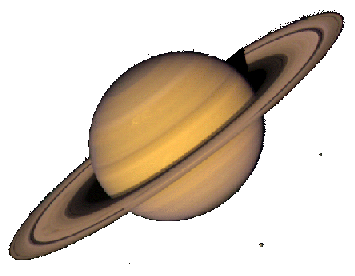Not content to confine ourselves to the study of terrestrial-type worlds, we have sent our robot explorers to probe the gas giants of the solar system.
Worlds of hydrogen and methane, surrounded by rings and moons of icy, glittering beauty, these planets symbolize all that we can and cannot do in space exploration. We can look at them, and chart the movements of clouds through atmospheres that were never created to sustain our type of life. We can photograph their rings and moons, and measure temperatures and pressures of places we may never be able to visit. It's a strange dichotomy, that we have learned so much about distant places we've never been. . .
Saturn

The most ancient in the pantheon of gods, the slowest of the "wandering stars", Saturn was known to various cultures as Ninib and Lubadsagush, Kronos, the Old Man and Father of the Gods of Olympus. Small wonder. . . the planet moves slowly across the sky, night after night, in a 29.5-year orbit around the Sun. It is so distant that its reflectd light takes more than an hour to reach our eyes.
Distance is no barrier to curiosity, and so with an instrument-laden spacecraft called Voyager, we first explored the rings of Saturn and the surfaces of its icy moons in 1981. It merely whetted our appetite for more. . .